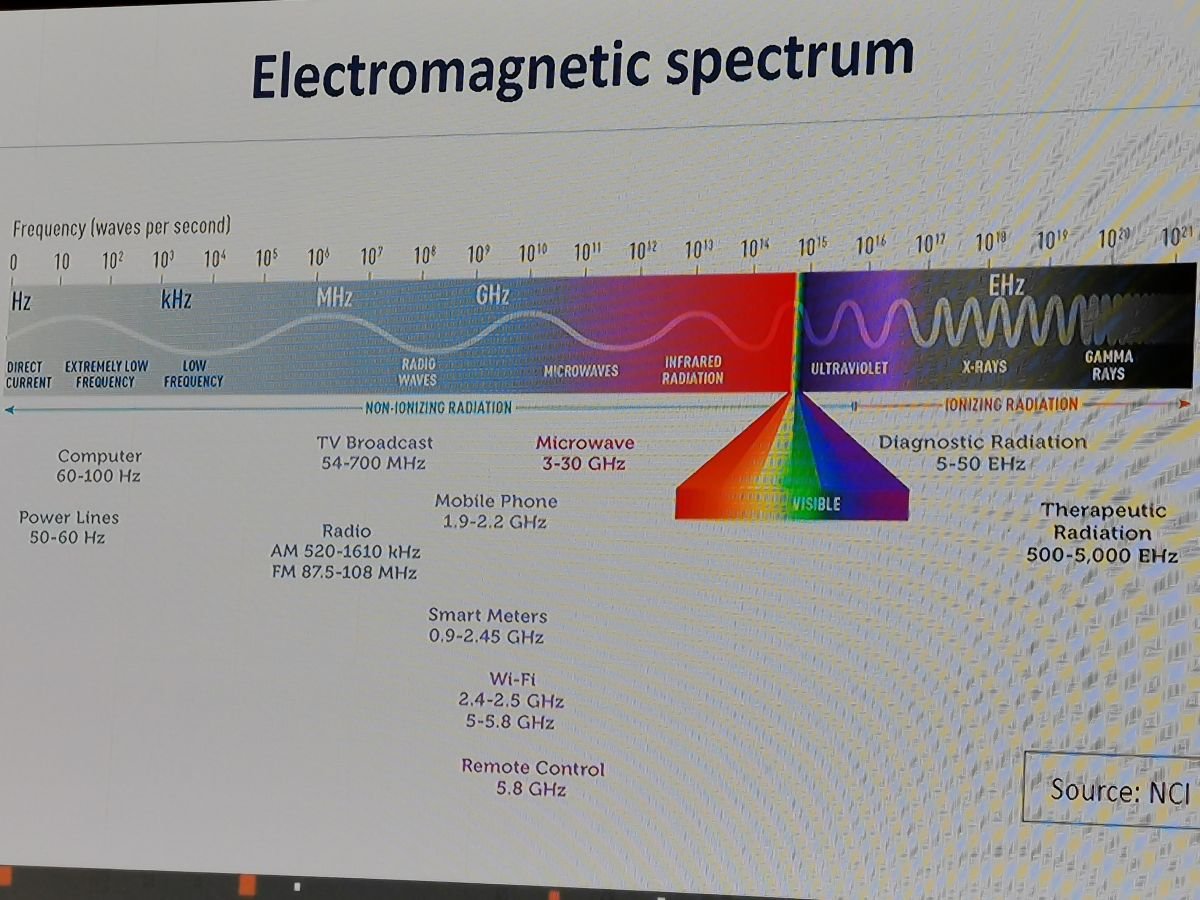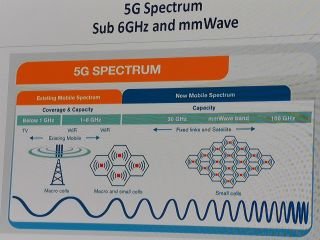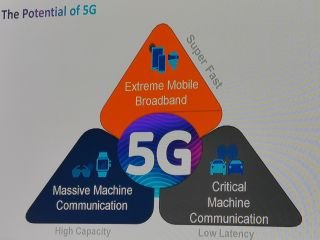
The fifth generation of cellular or 5G technology promises higher capacity, download speeds 10 to 100 times faster than 4G, low latency for the Internet of Things, robotics, autonomous vehicles, and medical applications. remotely, but expressed concern about possible health effects of radio. Frequency (RF) energy transmitted by base stations and 5G devices. The global electromagnetic spectrum consists of static electricity and magnetic fields, RF, microwave, infrared, ultraviolet, X-rays, and gamma rays. RF is in the middle part of the spectrum and is used for radio communications, mobile phone networks, mobile base stations and mobile phones and to provide 3G, 4G, 5G, Wi-Fi and Bluetooth technologies. Non-ionizing radiation (static infrared field) does not carry enough energy to break molecular bonds. Ionizing radiation (ultraviolet to gamma radiation) carries enough energy to break the bonds between molecules and ionized atoms. 5G systems operate in various frequency bands, low, medium and millimeter wave (24.25 GHz to 86 GHz). Millimeter wave is one area that has raised concerns outside of the multitude of small cells mounted on utility poles along public streets and near subscribers, but this spectrum has been used in many other applications, such as security scanners. airport security and anti-collision radars for automobiles. but now millimeter wave is used for cellular communications in many countries. The delegates, speaking at the "UAE 5G Conference", said that current evidence does not confirm the existence of any health consequences of low-level exposure (according to current international exposure guidelines developed by ICNIRP and IEEE-ICES), electromagnetic fields (EMF). They pointed out, based on many experiences and studies, that modern technology does not have a negative impact on health.

Who sets the standards for EMF exposure?
The International Commission on Non-Ionizing Radiation Protection (ICNIRP) and the International Committee on Electromagnetic Safety (IEEE-ICES) have established guidelines for the protection of individuals against non-ionizing radiation, particularly as a result of exposure to 5G technologies. Countries often adopt one and legally recommend or require compliance with the guidelines. Safety standards already have large safety margins.
Security factor
Dr. Chung Kwang Chou, chairman of the International Committee on Electromagnetic Safety (IEEE), said the common understanding is that radiation can cause cancer and other diseases, but the biological effects of exposure. RF has been studied for approximately 70 years and research shows that the only established detrimental effect of RF energy (above 100 KHz) on health is the thermal effect. Dr. Jafar Keshwari, Assistant Professor of Biomedical Engineering at Aalto University, Helsinki and Corporate Product Regulations and Standards Management at Intel Corporation and Chairman of the International Committee on Electromagnetic Safety (IEEE-ICES), said that exposure to CEM of a mobile device is much lower than that of other devices. "During RF exposure, biological effects still exist, but adverse health effects depend on the level of exposure. Thermal effects remain the proper basis for protection against health effects of RF exposure. at frequencies above 100 kHz," he said. As long as the product complies with the exposure limit, he stated that it was safe. For mobile phones the limit is 2 watts per kilogram and adverse effects are seen when it reaches 100 watts per kilogram. "So there is a large safety factor in the exposure limits. It is the responsibility of the regulator to verify that each product on the market, device or base station complies with the limits. The manufacturer must assess the exposure according to the limits," he said. Furthermore, he stated that the main safety concerns of 5G mmwaves were heating of the skin and eyes. "The skin constitutes 95% of the surface of the human body, while the cornea of the eyes constitutes 75% of fresh water and a thickness of 0,5 mm. Millimeter waves are absorbed at approximately 0,5 mm from the skin surface, as opposed to RF energy at lower frequencies that can penetrate deeper into tissues," he said. Regardless of how often you come across, ICNIRP Commissioner Professor Rodney Croft said safety depends on the strength of the field, or the amount of energy absorbed by the body per second. "If we have a lot of energy per second, then you get hot and your body can't get rid of that heat." The body can remove a small amount of energy because the blood supply absorbs heat and distributes it, and the bloodstream exchanges heat with the environment. This happens with all frequencies and only if you get much higher frequency then it happens with ionizing radiation and at this point we have a very different story," he said.